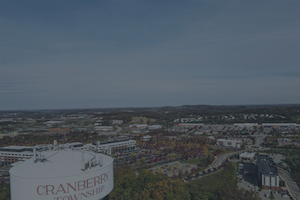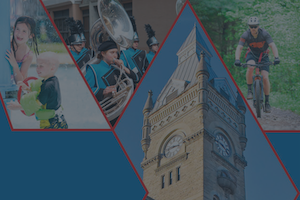The Lincoln Highway: America’s First Road Trip
Long before the sleek ribbon of Interstate highways crisscrossed the United States, a bold idea sparked the imagination of a nation. That idea was the Lincoln Highway — America’s first transcontinental automobile road.
From its conception in the early 20th century to its legacy today, the Lincoln Highway helped shape how Americans experience travel, community, and the open road. It wasn’t just a route — it was a revolution. And today, its story is kept alive by organizations like the Lincoln Highway Heritage Corridor and the Lincoln Highway Experience Museum.
The early 1900s were a time of transition. Automobiles were beginning to replace horse-drawn carriages, but roads remained primitive — dusty, muddy and largely unmarked. In 1912, Carl G. Fisher, an entrepreneur who had already helped bring the Indianapolis Motor Speedway to life, had a visionary idea: to build a transcontinental highway that would span from Times Square in New York City to Lincoln Park in San Francisco. His motivation was both practical and promotional — he believed better roads would boost the automobile industry and open up the vast countryside to travelers.
Fisher and a group of like-minded industrialists, including Henry Joy of the Packard Motor Car Company and Frank Seiberling of Goodyear Tire, formed the Lincoln Highway Association in 1913. They named the road in honor of President Abraham Lincoln, symbolizing national unity and progress. Their mission was to create not a new road, but a clearly marked and improved route using existing roads and trails.
On Oct. 31, 1913, the official route of the Lincoln Highway was announced — spanning approximately 3,389 miles through 13 states. It passed through small towns and big cities alike, offering a lifeline to communities that had previously been isolated.
Creating the Lincoln Highway wasn’t just a matter of marking signs — it was a massive public-private effort to improve infrastructure. The route began as a patchwork of roads in various states of disrepair. Communities along the route were often responsible for upgrading the roadbed, laying gravel and maintaining bridges. In many ways, the Lincoln Highway was a grassroots movement driven by civic pride and the lure of being “on the map.”
The highway quickly became a proving ground for new road-building techniques. It was also the first to introduce the idea of route branding, with recognizable signage and guidebooks to help travelers. These innovations laid the groundwork for later highway systems and tourist routes.
Before the Lincoln Highway, long-distance travel in the U.S. was limited mostly to railroads. The automobile opened new possibilities — and the Lincoln Highway invited Americans to explore them. The highway offered more than just a way to get from coast to coast; it promised adventure, discovery and a firsthand look at the changing American landscape.
As cars became more affordable thanks to Henry Ford’s assembly line, the concept of the road trip took hold. Families packed up their Model Ts, and the Lincoln Highway became a main artery for early tourism. Towns along the route built gas stations, diners, motor courts and roadside attractions to serve travelers. The economic boost to these communities was substantial, and the culture of auto tourism began to take root.
The highway also played a key role in America's military and logistical readiness. In 1919, a young Lt. Col. Dwight D. Eisenhower participated in a U.S. Army convoy along the Lincoln Highway to assess cross-country mobility. The grueling journey exposed the poor condition of roads nationwide and would later influence Eisenhower’s support for the Interstate Highway System.
The Lincoln Highway remained a major route through the 1920s and 1930s, but its prominence began to wane with the establishment of the numbered U.S. Highway System in 1926. Portions of the highway were redesignated as U.S. Routes 30, 50 and others. While the name “Lincoln Highway” faded from official maps, its spirit lived on in the communities that had grown along its path.
The 1950s brought the construction of the Interstate System, which bypassed many of the towns the Lincoln Highway once served. Though it was no longer the nation’s primary east-west route, the Lincoln Highway retained its cultural significance as a symbol of the American road trip and the pioneering spirit of early motorists.
In the decades that followed, a renewed interest in heritage tourism and roadside Americana led to efforts to preserve what remained of the historic route. Nowhere is this more vibrant than in Pennsylvania, where the Lincoln Highway Heritage Corridor was established in 1995.
Spanning 200 miles from Abbottstown to North Huntingdon, the corridor interprets and celebrates the Lincoln Highway’s impact on Pennsylvania’s communities and culture. Through a combination of murals, interpretive exhibits and educational programming, the Corridor showcases the unique history and character of the road and the people who lived and worked along it.
Colorful vintage-style murals on barns and buildings highlight iconic moments in travel history. Metal road signs mark original stretches of the route. Roadside giants and quirky art installations add a sense of fun, while oral histories and historical markers offer a deeper look at the highway’s human stories.
The corridor also collaborates with small businesses, tourism boards and preservationists to promote sustainable economic development along the route — just as the highway once did in its heyday.
At the heart of the Lincoln Highway Heritage Corridor is the Lincoln Highway Experience Museum in Latrobe, Pa. Housed in a beautifully restored 1815 stone stagecoach stop, the museum immerses visitors in the sights, sounds and stories of the historic route.
Exhibits include vintage cars, recreated 1930s service stations, and period road maps that help visitors imagine what travel was like in the early days. Interactive displays invite guests to trace the highway’s path, learn about the people who traveled it and discover the innovations that made automobile travel accessible to the average American.
One of the most popular features of the museum is its antique gas pump selfie station and the authentic 1938 diner booth, where visitors can sit down and feel like they've stepped back in time. Guided tours and educational programs make the Lincoln Highway’s legacy accessible for all ages.
Today, the Lincoln Highway represents more than just a means of transportation — it stands as a monument to American ingenuity, community and the freedom of the open road. In an age where GPS leads and interstates dominate, there’s a growing appreciation for the slow road, the scenic byway and the stories embedded in America’s backroads.
Thanks to the ongoing work of the Lincoln Highway Heritage Corridor and the Lincoln Highway Experience Museum, this first great American road continues to inspire. They remind us that history isn’t always confined to books or museums — sometimes, it’s paved beneath our very wheels.
Spencer Simpson is manager of visitor services at the Lincoln Highway Experience Museum.










